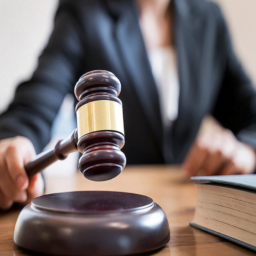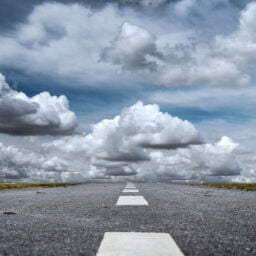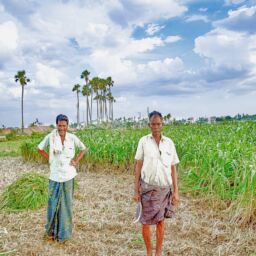Introduction
In a democracy, the right to protest is one of the most important pillars of the nation. A person has a right to protest in a peaceful manner to show his dissent towards the policies formulated by the government. It provides feedback to the government about its actions. The Right to protest plays an important role in upholding the spirit of democracy. It acts as a watchdog of democracy. The right to protest is either explicitly or implicitly recognized by several other constitutions across the world. As with every other right, this right also comes with certain reasonable restrictions that authorities can impose on these rights. In this article, we will try to have a deep understanding of the rights of the citizens to protest and the powers of the authorities to impose restrictions.
Constitutional provisions
The Right to protest is not explicitly mentioned in the constitution of India. It can be derived from Article 19 of the constitution of India. “Article 19 – (1) All citizens have (a) Right to freedom of speech and expression. (b) Right to assemble peacefully without arms. (c) Right to form associations or unions”. These rights also come with certain reasonable restrictions as described in sub-clause 2 of Article 19. It says that state can impose certain reasonable restrictions on any right conferred in Article 19 (1) in the interest of the sovereignty and integrity of India, the security of the State, friendly relations with foreign States, public order, decency or morality, or in relation to contempt of court, defamation or incitement to an offence.[1]
Protests in the Pre – Independence era
The protests in India are not new. India has a long tradition of protests. It has witnessed huge amounts of protests in history as well before the independence of India in the British colonial rule. In the British era, laws like the Prevention of seditious meetings act 1911 and the Rowlatt act 1919, prohibited the rights of collectively exercising freedom of speech and expression. The Quit India movement where Mahatma Gandhi along with other leaders gathered for a protest. All the protestors were detained by the British government. Other movements like the satyagraha and swadeshi movement played a significant role in India’s independence. Due to these protests by our freedom fighters only, India was able to achieve its independence.
The recent protests and Judicial interpretations
Right From India against corruption (IAC) movement which was led by social activist Anna Hazare, to the Nirbhaya rape case, protests in India continue to secure democracy. In Ramlila maidan v. home secretary, the union of India and Ors[2], Baba Ramdev took permission to hold a yoga campaign in Ramlila maidan in July 2011. But eventually, in the name of the yoga campaign, baba Ramdev along with thousands of other people started protesting against the government’s failure to curb black money. The police authorities withdrew the permission to hold the yoga camp. The Authorities imposed section 144 (Cr.P.C), The Delhi police and CRPF personnel were deployed to remove the protestors from the site and they violently used force, tear gases, and water cannons. The supreme court took Suo moto of the case and said that the imposition of section 144 was unreasonable against the peaceful protestors. The court observed that section 144 can be imposed only when there exists some imminent threat, and the immediate prevention of harm is required The order to pass this section must be based on material facts and the urgency of the situation must exist. The authorities should provide reasonable time and prior notice before taking any action. Authorities have the power to impose reasonable and temporary restrictions to maintain peace. The court held that in the present case, there was no threat and the authorities intervened unreasonably. It also ordered disciplinary actions against those police personnel who used excessive force. The court referring to Ram Jethmalani & Ors. vs. Union of India[4] said that it was the state’s obligation to protect the right to privacy of sleeping persons under the constitution of India.
In Amit Sahni v. Commissioner of Police and ORS[5], the Central government introduced the Citizenship (Amendment) Act 2019 (CAA) and nationwide national register of citizens (NRC) in December 2019, this erupted huge protests. A group of women activists initiated the protest in Shaheen bagh in Delhi. Gradually, a huge crowd was involved in the protest, blocking the road with tents. A petition was filed regarding the obstructions. The petitioner asked the court to direct the Delhi police to remove the protestors from the roads. The Delhi HC ordered the authorities to remove the protestors from public ways and to take necessary steps in the larger public interest. Even after the court’s order, the situation remained the same. The petitioner then moved to the SC. The protestor’s counsel argued that they have the right to protest and that the authorities can only impose reasonable restrictions. SC held that in the present case the blockage has resulted in inconvenience to the commuters and observed that ‘your right to protest should not harm other’s right to movement’[6]. Public places cannot be occupied for protest and that too for an indefinite period of time. The court referred to the ‘Himat lal k shah v. commissioner of police, Ahmedabad and anr’[7], here SC accepted the right to peaceful assembly and to hold meetings in public places, but they are subject to the control of time and place by the authorities. The court also referred to Mazdoor Kisan shakti sangathan v. union of India[8], It was held that every fundamental right does not exist in isolation and it has to be balanced with other rights that contrasts with it.
Farmers’ protest
The central government introduced three farm laws in September 2020:
- Farmers’ Produce Trade and Commerce (Promotion and Facilitation) Act, 2020
- Essential Commodities (Amendment) Act, 2020
- Farmers (Empowerment and Protection) Agreement on Price Assurance and Farm Services Act, 2020.
These laws triggered many protests by farmers across the nation. The constitutional validity of these acts was challenged in the SC. A bench headed by the then CJI, Sharad Arvind Bobde, issued notice to the central government seeking its reply on how the parliament is competent to make laws on agriculture, a subject matter which is majorly covered in the state list under the seventh schedule. The farmers from the state of Punjab and Haryana came to the national capital for protesting, as in these laws there were provisions that the farmers are now free to sell their produce outside the APMC mandi, and there were assumptions that these laws will not provide the MSP[9]. The private buyers will exploit the farmers as most of them are illiterate and unable to understand the contracts. Petitions seeking the removal of protestors from the Delhi – NCR border were filled by the local residents as it was causing a disturbance in commuting They contended that the protest where thousands of farmers gathered, increases the risk of the spread of the covid-19 virus. The CJI asked the government to put on hold on the implementation of the laws. SC held that they will not interfere in the farmer’s protest until it is non-violent and peaceful, but it is to be ensured that it does not cause disturbance to others right to movement. Finally, due to the protests by the farmers, the central government decided to repeal these farm laws[11]. It is once again proved that right to protest plays a major role in safeguarding democracy. There have been several other protests including, when spiritual leader Baba Ram Rahim was arrested, his supporters gathered in a huge number for his release
Conclusion
Right from the pre-independence British era to recent times, the right to protest continues to glorify and protect citizens’ rights. Judiciary has time to time interpreted that every citizen has the right to protest in order to show their disagreement towards the government, but the protests should be carried out in a peaceful manner without violence and causing any kind of annoyance to the general public. Protests which include burning the buses, cars and harming any such other properties, pelting stones on police personnel and others, causing disturbance to the public, blockade of railway tracks, highways, public roads, should be disregarded. The appropriate authorities ought to act proportionately in order to keep public places clear from obstructions and encroachments. As said by the SC in the Amit Sahni case the police should interfere only when there is an immediate apprehension of threat to the public and must make decisions in the larger public’s interest.
Author(s) Name: Bhaskar Upadhyay (Dharmashastra National Law University, Jabalpur)
References:
[1] “Constitution of India” <https://www.constitutionofindia.net/constitution_of_india/fundamental_rights/articles/Article%2019> accessed January 25, 2022
[2] (2012) 5 SCC 1, 2012 AIR SCW 3660
[3] (2012) 5 SCC 1, 2012 AIR SCW 3660 [44]
[4] (2011) 8 SCC 11
[5] CIVIL APPEAL NO. 3282 OF 2020
[6] Amit Sahni v. Commissioner Of Police & Others, 2020 SC 432 [16]
[7] 1973 AIR 87, 1973 SCR (2) 266
[8] 2 (2018) 17 SCC 324
[9] Frontline-The Hindu <https://frontline.thehindu.com/cover-story/farmers-protests-why-are-farmers-angry-in-punjab-haryana-over-new-farm-laws-2020/article33320475.ece> accessed January 25, 2022
[10] The Hindu <https://www.thehindu.com/news/national/other-states/plea-in-supreme-court-to-move-protesting-farmers-from-delhis-border/article33253278.ece> accessed January 25, 2022
[11] The Hindu <https://www.thehindu.com/news/national/cabinet-approves-farm-laws-repeal-bill/article37658627.ece> accessed January 25, 2022
[12] The Hindu <https://www.thehindu.com/news/national/many-die-in-protests-after-dera-chief-convicted-of-rape/article19562812.ece> accessed January 25, 2022
[13] The Hindu <https://www.thehindu.com/news/national/the-hindu-explains-what-triggered-the-bharat-bandh/article23416602.ece> accessed January 25, 2022
[14] AMIT SAHNI VERSUS COMMISSIONER OF POLICE & OTHERS LNIND 2020 SC 432
















